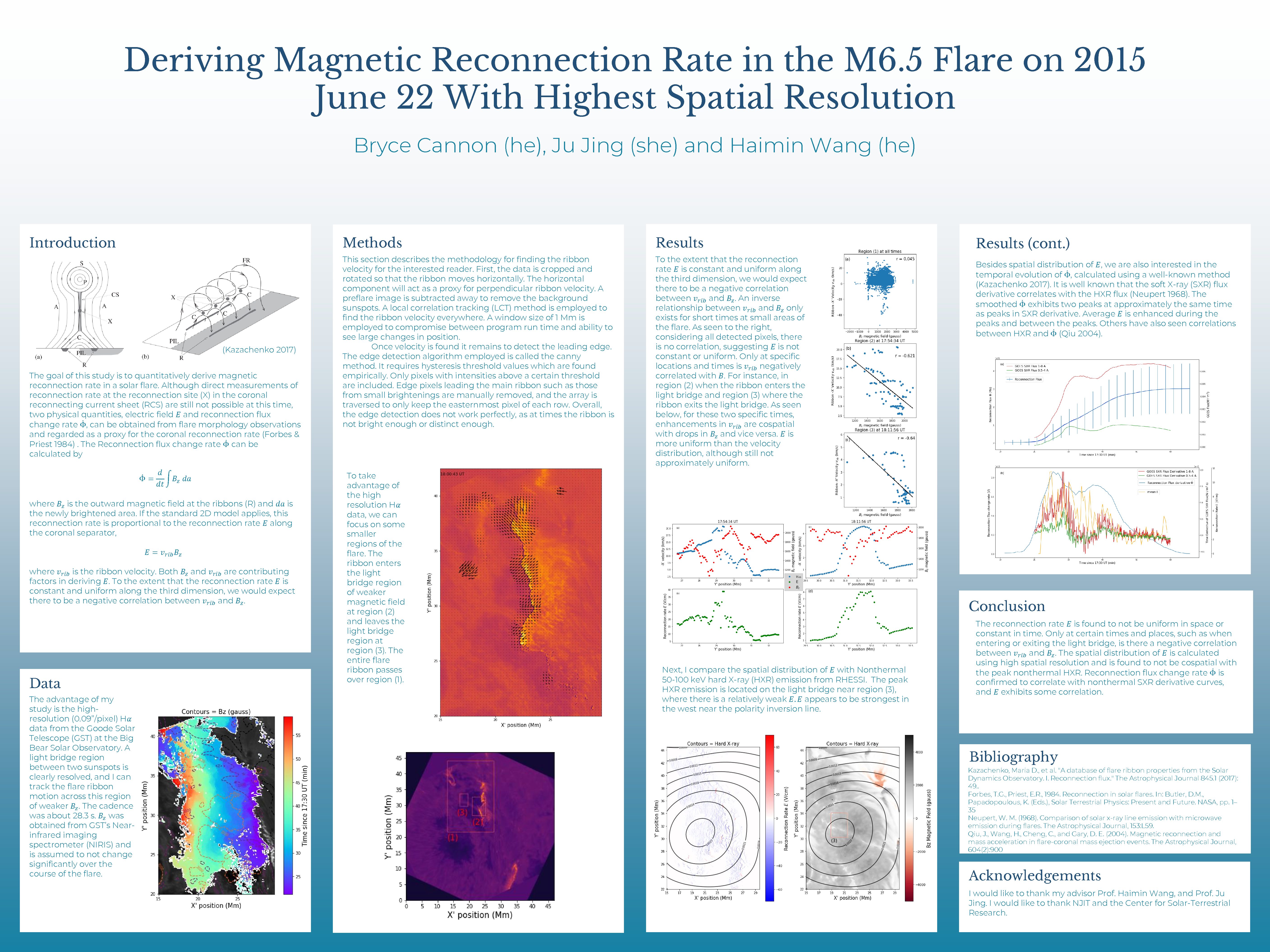Authors: Bryce Cannon (NJIT), Haimin Wang (NJIT), Ju Jing (NJIT)
Magnetic reconnection is an important process to quickly release stored magnetic energy in solar flares. Quantitative studies of magnetic reconnection rate in flares are essential for understanding fast reconnection and subsequent energy release. In the context of the progressive coronal magnetic reconnection as shown in the so-called CSHKP standard model, we derive coronal magnetic reconnection rate of the M6.5 flare on June 22,2015 in two terms, reconnection flux change rate and reconnection electric field, both of which can be obtained from observations of flare morphology at the chromosphere. Data used include a sequence of H$\alpha$ images with unprecedented resolution during the flare from the Visual Imaging Spectrometer (VIS) of the Goode Solar Telescope (GST) at the Big Bear Solar Observatory (BBSO) and a pre-flare line-of-sight magnetogram from GST’s near-infrared imaging spectropolarimeter (NIRIS). A Local Correlation Tracking (LCT) method is employed to measure the flare ribbon speed. Both spatial and temporal evolutions of reconnection rate are presented and compared with that of non-thermal hard X-ray (HXR) emissions.


